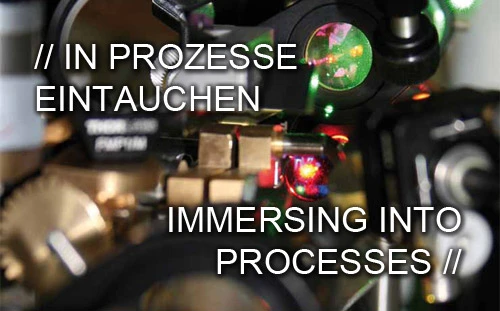Immersing into Processes
Modern analytical methods in bioanalytics
Whether the inside of cells or haze in the atmosphere, modern analytical methods depict images of worlds both inside and around us. And these methods are gaining in precision and speed.
“Without analytical chemistry there would be no climate research,” was the announcement in March at the ANAKON conference for analytical chemistry in Zurich. Modern techniques of atmospheric chemistry not only provide precise details on the composition of the air, but also determine the origin of certain substances. All this is made possible by the innovative online aerosol mass spectrometers. These can, for instance, analyse the distribution of polycyclic aromatic hydrocarbons that are emitted by combustion processes, and evaluate the effects of iodine compounds – produced by algae in phytoplankton – on ozone depletion.
According to Michael Linscheid, Head of the Applied Analytics and Environmental Chemistry Laboratory of Berlin’s Humboldt University, bioanalyses can now make use of “dramatically” faster analytical methods for DNA. “The analysing technologies for a personalised medicine are already available.” He continued that the progress of mass spectrometry has today led to the analysis not only of single proteins, but also of whole protein complexes and their interactions in networks. Yet it is bioinformatics and mathematical modelling techniques that first make the data meaningful and interpretable. “Mathematics and bioinformatics allow us to predict with ever greater precision,” explained Linscheid, particularly for the basic processes of biology which can now be captured and depicted in ever greater detail, or for the analytical modelling of distribution processes in the air or in the material sciences, e.g. for the better understanding of catalytic processes. How enzymes work can be visualised in future with synchrotron radiation.
A further trend is towards coupling selective and specific verification methods that work with ever smaller sample quantities for ever greater precision in separating the analytes. “The objective of detecting and counting every molecule in a sample is of course unattainable,” confessed Michael Maiwald, process analyst at the BAM Federal Institute for Materials Research and Testing in Adlershof. According to Maiwald, it is important to conduct direct measurements as early as possible in the process chain: only constant control of the course of production can regulate and intervene in good time. “We want to become immersed in the process – like in Google Street View.”
by Sascha Karberg
